Understanding Autism and Its Associated Complications
Autism spectrum disorder (ASD) is a complex neurodevelopmental condition characterized primarily by challenges in social communication and behavior. While core symptoms typically manifest early in childhood, the disorder often coexists with a variety of physical, neurological, and psychiatric health issues that can significantly influence an individual's quality of life. This article explores the broad spectrum of complications linked to autism, delving into their causes, manifestations, and management strategies.
Core Symptoms of Autism and Early Signs
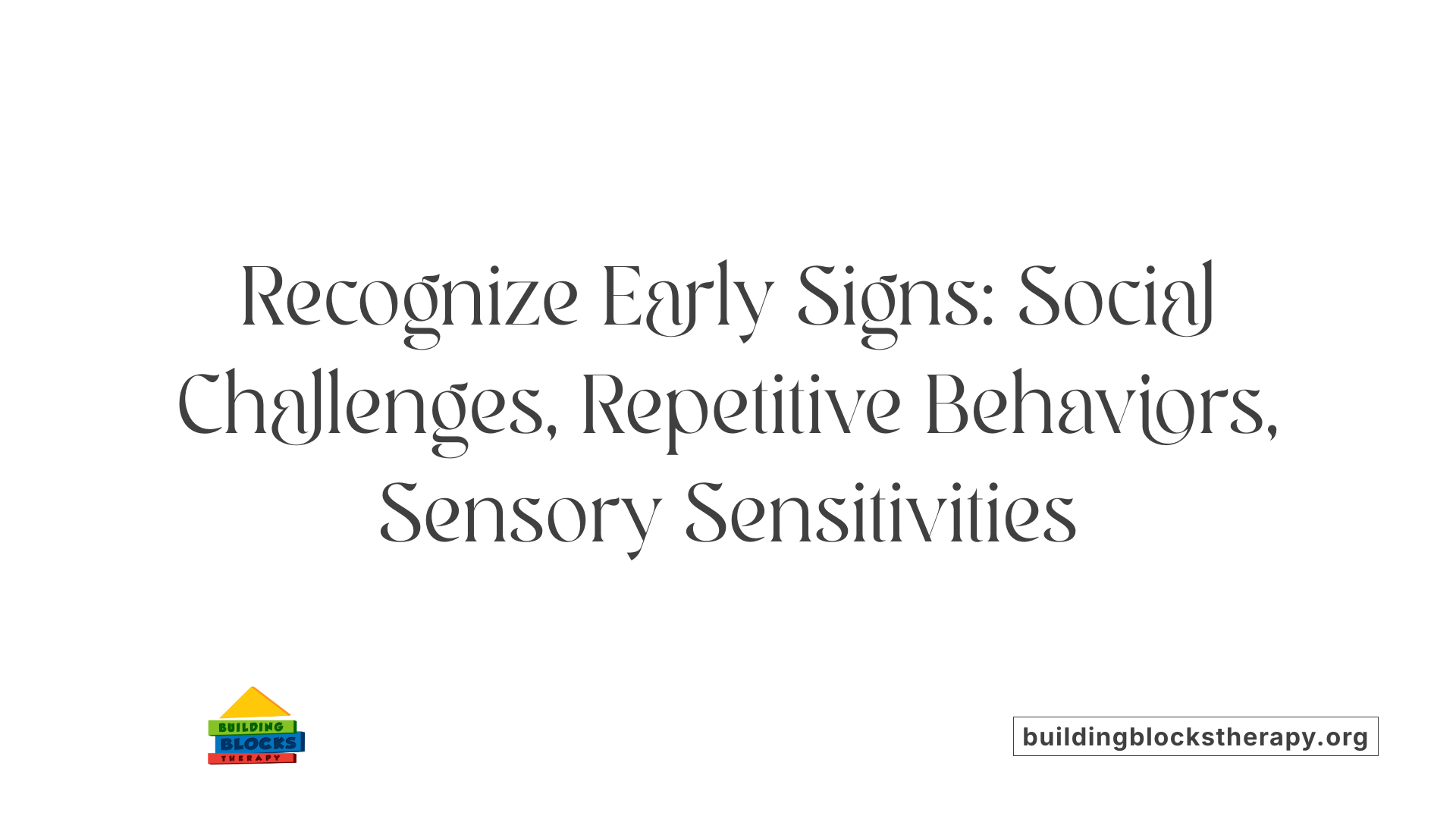
What are the primary symptoms of autism?
Autism spectrum disorder (ASD) manifests through a range of behaviors that typically appear early in childhood. The most defining features include challenges with social interaction, such as difficulty making eye contact, responding to names, and understanding nonverbal cues like gestures or facial expressions. Many children with autism also experience communication difficulties, often presenting as delayed speech development or loss of language skills they previously acquired.
Repetitive behaviors are common, including hand-flapping, rocking, or repeating words and phrases. Restricted interests often involve intense focus on specific topics or routines, which provide comfort and predictability.
Sensory sensitivities are also characteristic, with individuals reacting strongly or not at all to stimuli like bright lights, loud noises, or textures. These sensitivities can lead to distress or avoidance behaviors.
Some children develop or lose skills after reaching developmental milestones, and symptoms can vary widely among individuals. Overall, these behaviors influence daily functioning and social relationships.
Causes and Risk Factors of Autism Spectrum Disorder
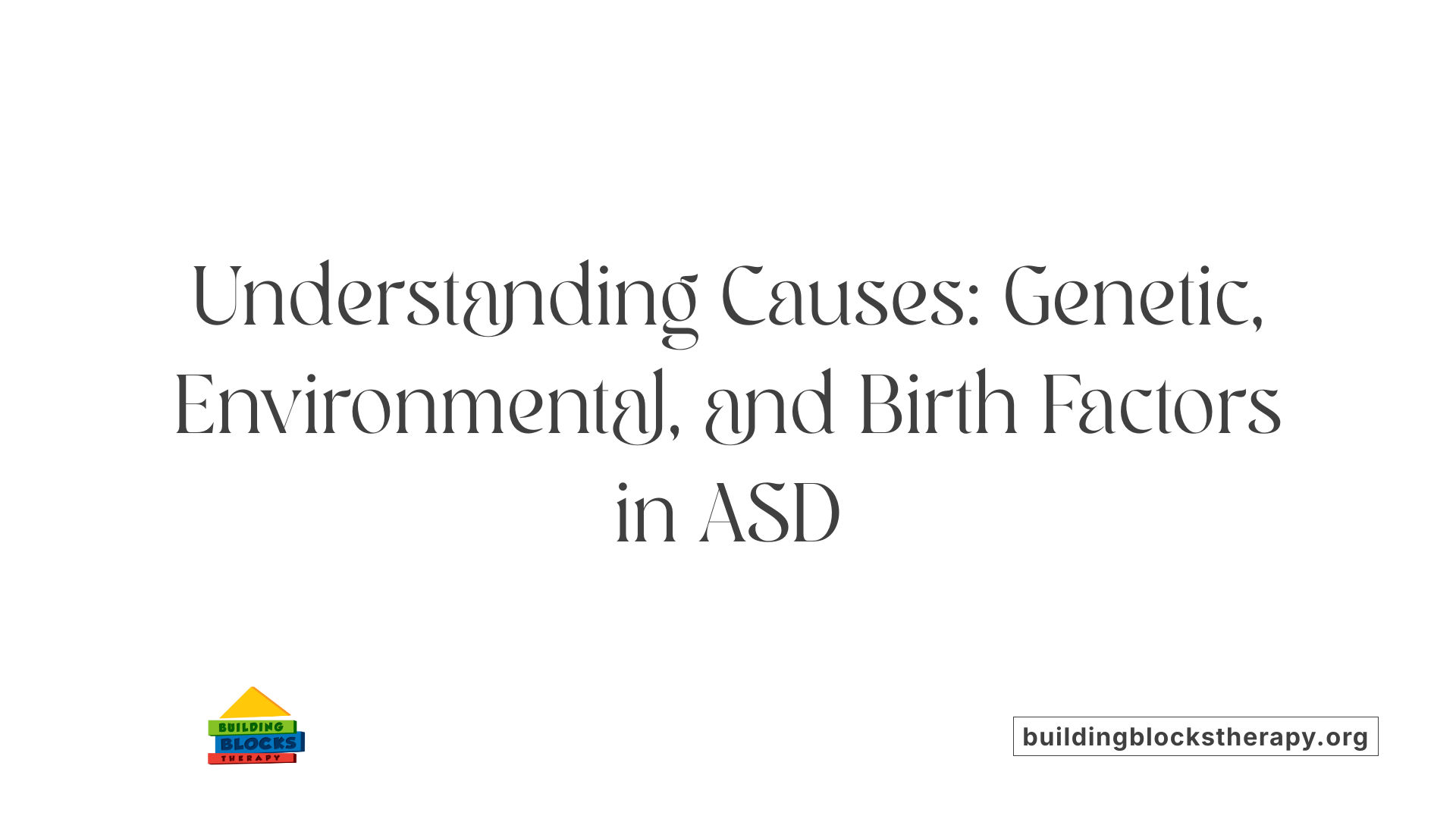
What are the potential causes and risk factors for autism?
Autism spectrum disorder (ASD) is influenced by a complex mix of genetic and environmental factors. Genetics play a significant role, with heritability estimates ranging from 50% to 90%. Hundreds of genes involved in brain development, neural communication, and connectivity are associated with autism. Variations in these genes, including spontaneous de novo mutations, especially in children of older fathers, contribute to increased risks.
Environmental influences also have a notable impact on autism susceptibility. Prenatal exposures, such as maternal infections, toxins like pesticides and air pollution, as well as certain medications taken during pregnancy, can affect fetal brain development. Additionally, parental factors such as advanced maternal and paternal age and maternal health conditions like diabetes or immune disorders are linked to a higher likelihood of ASD.
While no single cause explains autism, the interaction between genetic and environmental factors, known as gene-environment interplay, is crucial.
How do birth complications influence autism risk?
Birth complications are a well-documented risk factor for ASD. Children who experience issues immediately before or during birth are more likely to develop autism. Specific perinatal problems include birth asphyxia (oxygen deprivation), preeclampsia, premature separation of the placenta, breech presentations, fetal dystocia, and prolapsed umbilical cords.
Research shows that these complications significantly increase the risk of autism, approximately doubling or tripling the likelihood. The severity of the birth complication, combined with other factors such as exposure to labor and delivery drugs like Pitocin or general anesthesia, can amplify this risk.
The combination of birth complications with other adverse perinatal conditions can raise the risk further. For example, children exposed to both birth trauma and labor drugs have a risk increase of up to 44%. This suggests that early life events during birth play a substantial role in neurodevelopmental trajectories leading to ASD.
Gene-environment interactions
It is essential to understand that genetics and environment do not act independently. Instead, they interact in ways that influence brain development and autism risk. Certain gene variants may make a fetus more vulnerable to environmental toxins or complications, resulting in a higher probability of ASD.
In summary, the development of autism spectrum disorder is strongly associated with genetic predispositions, birth complications, and environmental exposures. The complex, intertwined nature of these factors emphasizes the importance of early detection and preventive strategies, particularly in populations at higher genetic or environmental risk.
| Aspect | Description | Associated Factors |
|---|---|---|
| Genetic | Involves multiple gene variations affecting brain development | Family history, spontaneous mutations, advanced paternal age |
| Environmental | Prenatal and perinatal exposures affecting neurodevelopment | Air pollution, pesticides, maternal health, birth complications |
| Birth complications | Issues during or before labor that impact fetal oxygenation | Birth asphyxia, preeclampsia, placenta problems |
| Gene-environment interaction | Combined influence on neurodevelopment | Vulnerable gene variants plus environmental toxins |
Understanding these influences can help guide research, early diagnosis, and intervention efforts to improve outcomes for individuals with ASD.
Medical and Neurological Comorbidities
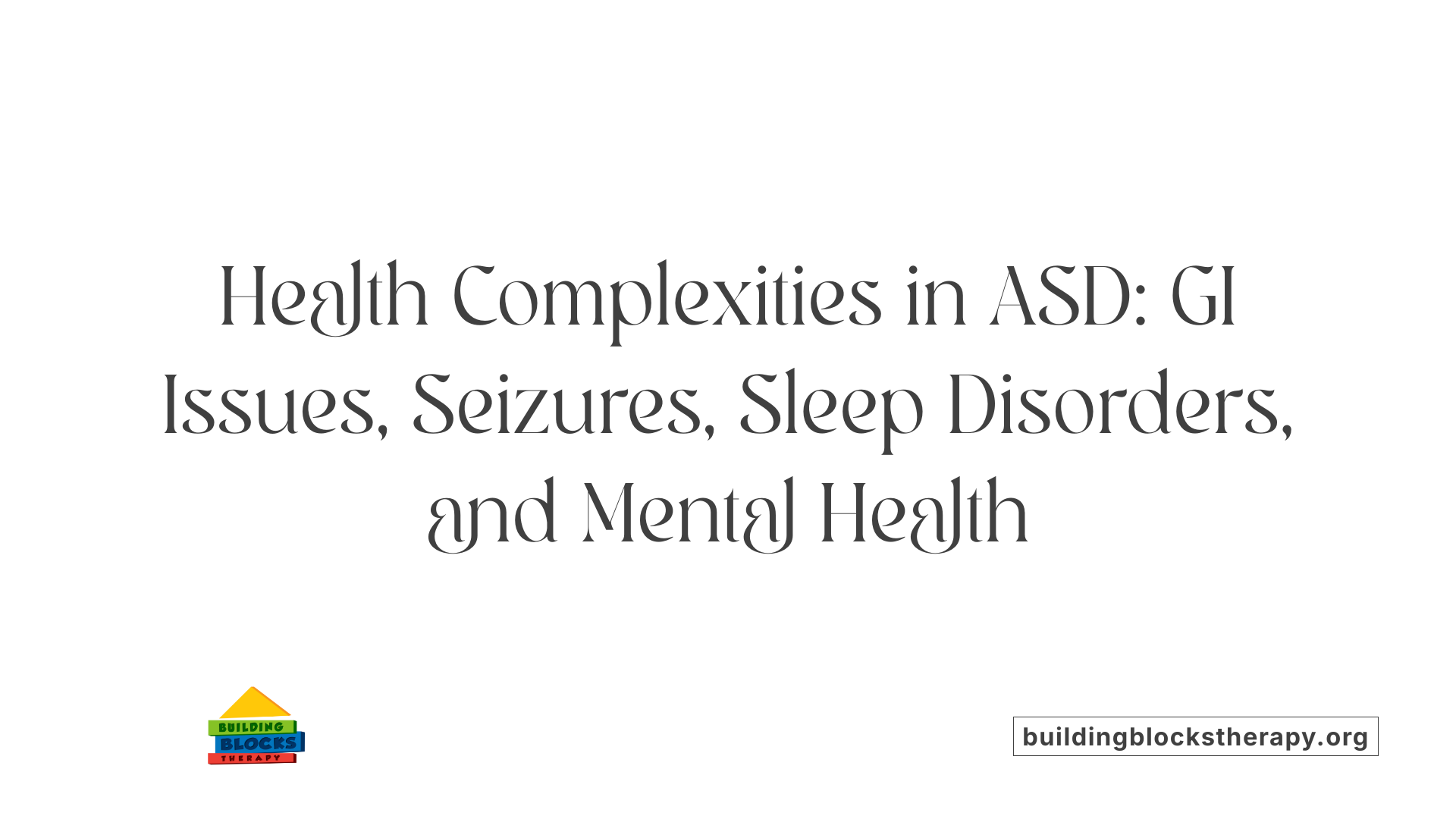
What health complications are commonly associated with autism spectrum disorder (ASD)?
Autism spectrum disorder (ASD) is often accompanied by a range of health issues that can significantly impact an individual's well-being and daily life. One of the most prevalent sets of complications involves gastrointestinal (GI) problems. Many autistic individuals, approximately 21%, experience chronic GI disorders such as constipation, abdominal pain, gastroesophageal reflux, and bowel inflammation. These issues can cause discomfort, behavioral challenges, and dietary restrictions.
In addition to GI concerns, neurological conditions are common among those with ASD. Seizures and epilepsy are particularly prevalent, affecting about 12.1% of autistic adults and 5% of children and adolescents on Medicaid. These neurological disorders often manifest as unexplained staring spells, involuntary movements, confusion, or severe headaches, and typically begin in childhood or adolescence.
Sleep disturbances are another widespread problem. Up to 80% of individuals with ASD experience chronic sleep issues, which can include difficulty falling asleep, frequent awakenings, and waking early. These problems can interfere with daily functioning, learning, and behavior. Specialized strategies and behavioral interventions are often recommended to improve sleep quality.
Mental health conditions frequently co-occur with ASD, complicating treatment and management. Anxiety disorders, especially social anxiety, are seen in 17.1% of children and 26% of adults. Depression affects 7.5% of children and over 20% of adults with autism. Disorders such as attention deficit hyperactivity disorder (ADHD), obsessive-compulsive disorder (OCD), bipolar disorder, and schizophrenia are also commonly diagnosed alongside ASD, each contributing unique challenges.
Other associated health issues include feeding and eating difficulties. Up to 70% of autistic children display atypical eating behaviors, such as food selectivity, food aversions, overeating, or pica, which can impact nutritional health.
Overall, individuals with ASD often face complex healthcare needs. Addressing these requires a comprehensive approach, combining medical, behavioral, and supportive therapies tailored to each person's unique profile.
What are the complications of autism?
The complications associated with autism spectrum disorder extend beyond physical health issues. Social interaction and communication difficulties are hallmarks of ASD that can lead to social isolation, misunderstandings, and challenges in forming and maintaining relationships. Many individuals struggle with interpreting social cues, understanding others' emotions, and engaging in reciprocal social behaviors.
Behavioral challenges, such as repetitive movements, intense interests, or resistance to change, can interfere with everyday activities and social participation. These behaviors may also lead to increased stress or anxiety, further complicating social integration.
Educational and employment opportunities may be limited due to communication and social skills deficits. Some individuals also experience delays or difficulties in speech and language development, affecting their ability to express needs and participate fully in society.
Additional complications include mental health difficulties like anxiety, depression, or mood swings, which can be exacerbated by social challenges or sensory sensitivities. Sensory processing issues might cause distress from common stimuli like lights, sounds, or textures.
Certain medical conditions, such as fragile X syndrome—an inherited genetic disorder—can co-occur with ASD, leading to additional developmental delays and behavioral issues. Sensory sensitivities and repetitive behaviors, while characteristic of autism, can also hinder adaptation to new environments or tasks.
Although autism presents lifelong challenges, early diagnosis and intervention, including therapies, educational support, and community resources, can help mitigate some difficulties and improve quality of life. Support systems are essential to assist individuals in navigating these complex, overlapping health and social issues.
What health issues are linked with autism?
Autism spectrum disorder is linked with diverse health problems that can affect many aspects of an individual's life. Among these, gastrointestinal issues are notably common, with about 21% of autistic children experiencing chronic problems like constipation, abdominal pain, and reflux. These conditions can cause discomfort and behavioral issues, impacting nutritional intake.
Neurological complications, especially epilepsy, are frequently seen; estimates suggest around 12.1% of autistic individuals (both children and adults on Medicaid) have co-occurring epilepsy. Seizures may manifest as staring spells, involuntary movements, or confusion, often starting during adolescence.
Sleep disorders are prevalent, affecting up to 80% of those with ASD. Common sleep problems include insomnia, difficulty falling asleep, early waking, and frequent night wakings. Poor sleep can intensify behavioral problems and impair cognitive functioning.
Mental health challenges are widespread as well. Anxiety is particularly common, affecting over 17% of children and 26% of adults with autism, with social anxiety being especially prominent. Depression affects about 7.5% of children and more than 20% of adults. Other disorders, such as obsessive-compulsive disorder (OCD), bipolar disorder, and schizophrenia, also appear with increased frequency.
Feeding difficulties and food selectivity are common, impacting around 70% of children with autism. These behaviors include aversions, restricted diets, or pica, which may pose nutritional risks.
Finally, sensory processing problems, immune deficiencies, and metabolic issues can further complicate health management. The high prevalence of these comorbid conditions underscores the importance of comprehensive healthcare approaches to support individuals with autism in optimizing their health and well-being.
Additional Details
| Condition | Prevalence in Autism | Typical Manifestations | Associated Risks |
|---|---|---|---|
| GI Disorders | 21% | Constipation, pain, reflux | Discomfort, behavioral issues |
| Epilepsy | 12.1% (adults), 5% (children) | Seizures, staring, confusion | Neurological impairments |
| Sleep Disorders | Up to 80% | Insomnia, waking early | Cognitive and behavioral impact |
| Anxiety | 17.1% (children), 26% (adults) | Social anxiety, worry | Social withdrawal |
| Depression | 7.5% (children), 20%+ (adults) | Sadness, loss of interest | Increased self-injury risk |
| Food Aversions | 70% | Selectivity, Pica | Nutritional deficiencies |
By understanding these interconnected medical and neurological factors, caregivers and healthcare providers can better tailor interventions to improve outcomes for those on the autism spectrum.
Behavioral, Developmental, and Mental Health Challenges in ASD
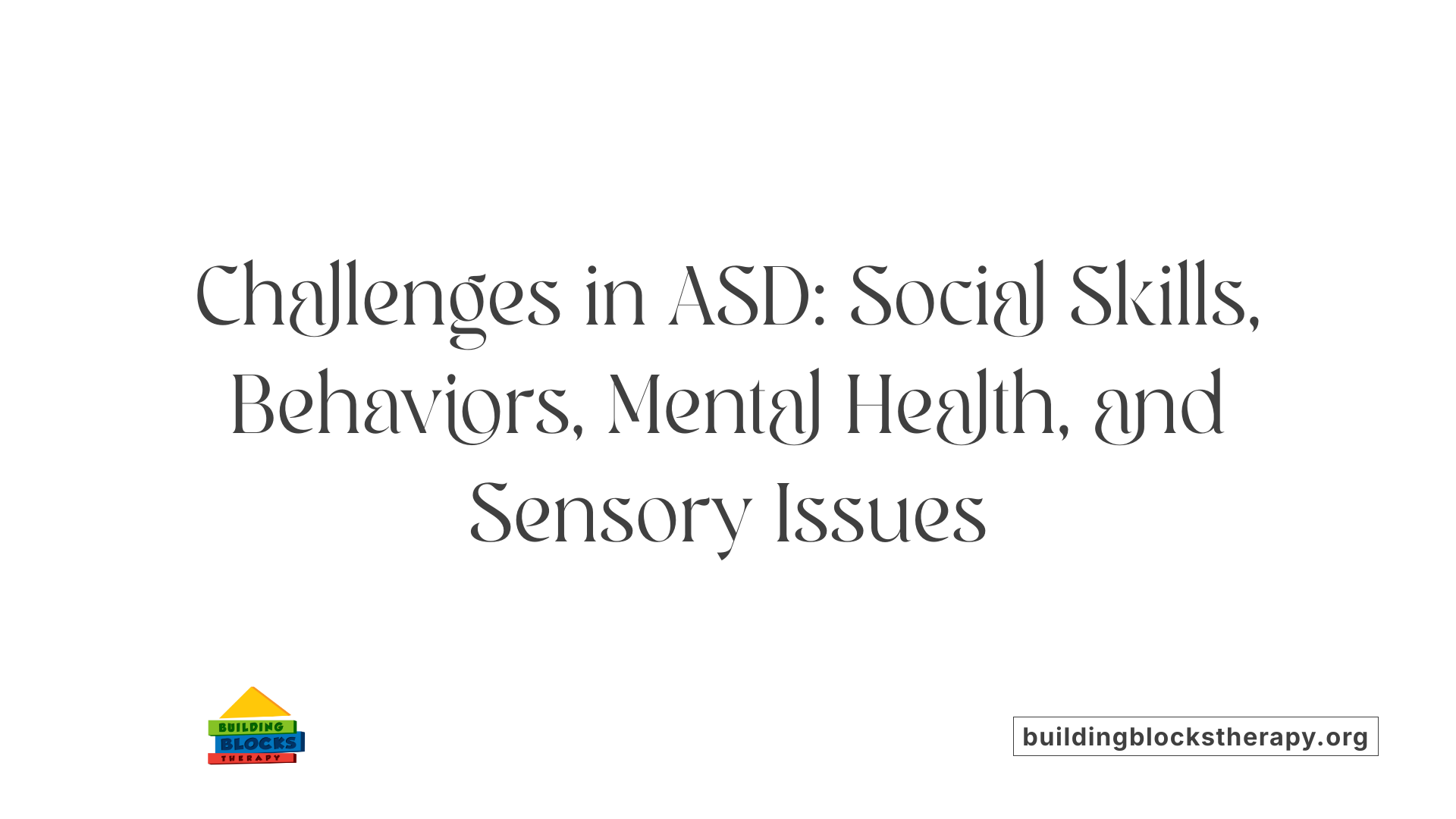
What are the challenges of autism?
The challenges associated with autism are diverse and multifaceted. They primarily include difficulties in developing and maintaining social skills, understanding social cues, and forming meaningful relationships. Many individuals on the spectrum struggle with social communication, such as making eye contact, interpreting facial expressions, and engaging in reciprocal conversations.
In addition to social difficulties, mental health issues are common among people with ASD. Conditions such as anxiety, depression, obsessive-compulsive disorder (OCD), and bipolar disorder frequently co-occur and can intensify behavioral challenges. These mental health issues often lead to feelings of fear, sadness, or hyperactivity, affecting daily life.
Behavioral problems such as self-injury, aggressive outbursts, meltdowns, and shutdowns are typical responses to sensory overload or emotional overwhelm. Meltdowns often involve intense emotional outbursts like screaming or crying, while shutdowns may lead to withdrawal and silence. Autistic burnout — a prolonged state of physical and mental exhaustion caused by masking autistic traits — is also prevalent. It can severely diminish an individual's functioning and resilience.
These combined challenges can interfere with education, employment, and social participation. Therefore, tailored interventions, including behavioral therapies, mental health support, and sensory accommodations, are essential to improve quality of life for individuals with ASD.
How do behavioral and developmental issues manifest in autism?
Behavioral and developmental issues in autism present through various observable signs. Social interaction difficulties are among the most noticeable; children with ASD often display limited eye contact, reduced facial expressiveness, and challenges in understanding or conveying emotions. Repetitive behaviors such as hand-flapping, rocking, or echolalia (repeating words or phrases) are common.
Many children exhibit restricted routines and intense focus on specific interests. Disruption of these routines can lead to distress and behavioral meltdowns. Sensory sensitivities — such as overreaction to loud noises, bright lights, or certain textures — can cause discomfort and behavioral reactions.
Other manifestations include sleep disturbances, food selectivity, and heightened sensory responses that interfere with daily activities. Neurobehavioral symptoms like hyperactivity, impulsivity, and mood swings are often observed, especially when ASD coexists with conditions like ADHD or mood disorders.
These issues underscore the importance of early diagnosis and comprehensive intervention strategies, including behavioral therapies, sensory integration approaches, and family support systems.
What mental health issues are prevalent in individuals with ASD?
People with autism are at a heightened risk for various mental health conditions. Anxiety disorders are especially common, affecting about 17% of autistic children and more than 20% of adults. Social anxiety is prevalent, manifesting as excessive worry about social situations, leading to avoidance and social withdrawal.
Depression is also significantly higher among autistic individuals. Studies indicate that between 7% and 20% of autistic children and adults experience symptoms of depression, including persistent sadness, feelings of hopelessness, and loss of interest in activities.
Obsessive-compulsive disorder (OCD) occurs more frequently in teens and adults with ASD, with symptoms like compulsive rituals and intrusive thoughts. Schizophrenia, though less common, is associated with ASD in about 8% of adults, involving processing difficulties and hallucinations.
Additionally, mood disorders such as bipolar disorder are observed in some individuals, characterized by episodes of mania and depression. The presence of these mental health issues complicates clinical management but highlights the importance of integrated mental health care tailored for individuals on the spectrum.
Overview of Challenges in Autism Spectrum Disorder
| Aspect | Manifestation | Related Conditions | Support Strategies |
|---|---|---|---|
| Social Skills | Poor eye contact, difficulty in social interactions | Social anxiety, difficulty understanding emotions | Social skills training, communication therapy |
| Behavioral | Repetitive movements, routines, meltdowns | Self-injury, aggression, sensory overload | Behavioral therapy, sensory integration |
| Mental Health | Anxiety, depression, OCD, bipolar | Mood swings, intrusive thoughts | Therapy, medication, supportive environment |
| Developmental | Delayed speech, poor coordination | Intellectual disabilities, learning difficulties | Early intervention, educational support |
| Sleep & Sensory | Insomnia, sensitivities to stimuli | Sleep disorders, sensory processing disorder | Sleep routines, sensory accommodations |
Understanding and addressing these interconnected challenges require a multidisciplinary approach, combining medical, psychological, and educational interventions to foster better outcomes for individuals with ASD.
Impacts on Daily Life and Long-term Outcomes
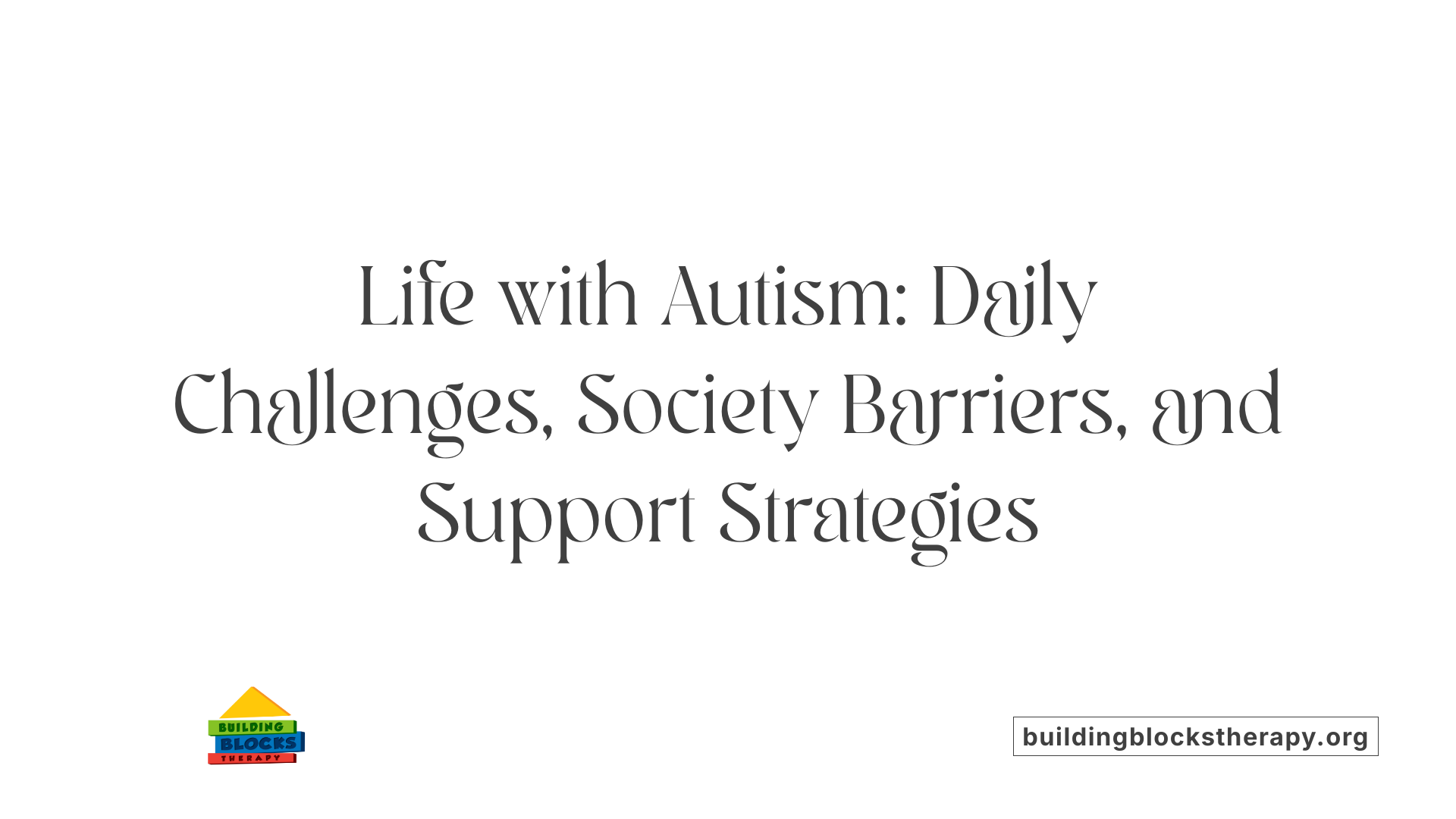
What are the possible complications of autism?
Autism can lead to a range of challenges that affect many aspects of daily life. Difficulties with social interaction and communication often hinder forming meaningful relationships and participating fully in community activities. Individuals might struggle to interpret social cues, which can lead to misunderstandings and social withdrawal.
Many with autism experience delays or deficits in speech and language skills, making communication a persistent obstacle. Some may be diagnosed with additional conditions like fragile X syndrome, which causes further developmental delays and behavioral issues. Sensory sensitivities—reacting strongly or not at all to stimuli like loud noises, bright lights, or temperature extremes—can interfere with routine activities. Repetitive behaviors and specific routines are common, and these behaviors can sometimes be disruptive.
While early intervention, therapies, and educational support help improve skills and quality of life, ongoing social, communicative, and behavioral issues may remain. The overall prognosis varies widely depending on individual circumstances, but many can lead fulfilling lives with the right support systems.
What challenges do autistic individuals face in society?
Social isolation is a significant obstacle for many autistic people. They often find it difficult to develop and maintain friendships, leading to feelings of loneliness and exclusion. Bullying and misunderstandings by peers are prevalent, especially during school years, which can exacerbate mental health problems like anxiety and depression.
Educational and job opportunities may be limited due to difficulties with communication and social cues. This can result in reduced participation in mainstream education and employment settings. Many experience occupational segregation, working in lower-paying or less accommodating environments.
Autistic individuals are at increased risk for self-injurious behaviors such as head-banging, skin-picking, or biting, often as responses to overwhelming stimuli or stress. The risk of suicidality is notably higher; studies suggest that between 10% and 25% of autistic youth and adults may attempt suicide, and many experience suicidal thoughts.
These societal challenges highlight the importance of inclusive policies, targeted mental health support, and community education to foster greater understanding and acceptance.
What support and strategies are available for improving quality of life?
Enhancing the life quality of autistic individuals involves early diagnosis and comprehensive support. Behavioral therapies like applied behavior analysis (ABA) are proven to improve social skills, reduce problematic behaviors, and promote independence.
Educational accommodations tailored to individual needs, along with assistive technologies, can facilitate learning and communication. Psychological treatments such as cognitive-behavior therapy (CBT) help manage co-occurring mental health conditions like anxiety or depression.
In addition, creating sensory-friendly environments—reducing noise, bright lights, and other sensory triggers—can lessen distress. Routine and structure help many autistic people feel more secure and manage daily stressors better.
Support also extends to families and caregivers through education, counseling, and community resources. Promoting inclusivity in workplaces, schools, and public settings not only enhances social participation but also reduces feelings of alienation.
Overall, early, individualized, and multidisciplinary approaches significantly improve outcomes and support adults and children with autism in leading meaningful lives.
Interventions and Support Strategies for Autism
What are current strategies for managing and intervening in autism-related health and developmental issues?
Managing autism involves a comprehensive mix of evidence-based interventions tailored to individual needs. Behavioral therapies are fundamental, with applied behavior analysis (ABA) being the most widely supported method. ABA techniques such as discrete trial training (DTT) and pivotal response training (PRT) help improve communication, social skills, and reduce problematic behaviors.
Developmental and naturalistic interventions, including the Early Start Denver Model (ESDM) and the Developmental, Individual-difference, Relationship-based (DIR) model or Floor Time™, emphasize engaging children in play and social interactions to foster language development and social understanding. These approaches prioritize natural learning within everyday routines.
Educational strategies further support skill development. Programs like TEACCH focus on structured teaching tailored to learners' needs, while social-relational approaches incorporate social stories and skills groups that enhance social interaction.
Medical treatments are sometimes necessary to manage co-occurring symptoms such as anxiety, hyperactivity, and sleep disturbances. These are administered under healthcare supervision and may involve medications like selective serotonin reuptake inhibitors (SSRIs) or sleep aids.
Complementary to direct therapies, parent-mediated programs empower caregivers to reinforce skills at home. Assistive technologies, including communication devices, facilitate expression and comprehension. Psychological therapies, notably cognitive-behavior therapy (CBT), address anxiety and mood issues. Early diagnosis and creating individualized intervention plans are crucial for improving long-term outcomes.
How can early intervention influence autism outcomes?
Starting support services early in life significantly influences the developmental prospects of children with autism. Interventions such as ABA, speech therapy, occupational therapy, and social skills training implemented before age 3 bolster communication, social engagement, and adaptive behaviors.
Early intervention leverages neural plasticity, enabling children to develop better coping mechanisms, reduce symptom severity, and improve learning outcomes. Tailoring therapies and involving parents in the process strengthens progress and encourages consistency.
Research consistently shows that children receiving early support are more likely to achieve greater inclusion in educational settings and attain higher independence levels in adolescence and adulthood. Routine screening and behavioral assessments during regular health check-ups facilitate timely intervention, ultimately leading to better quality of life for individuals with autism.
What role does family and community support play in managing autism?
Family involvement is central to effective autism management. Parents and caregivers serve as primary advocates, reinforcing therapy goals through structured routines and consistent behaviors. Their active participation enhances the efficacy of interventions and provides emotional stability.
Support groups offer families a platform for sharing experiences, coping strategies, and receiving emotional reassurance. These connections can alleviate feelings of isolation and empower families to navigate challenges.
Community inclusion initiatives are vital for promoting social integration and independence. Educational accommodations, such as individualized education programs (IEPs), social skills groups, and workplace supports facilitate participation in societal activities.
Healthcare providers, educators, and local organizations working collaboratively with families ensure comprehensive care tailored to each individual's needs. This holistic approach enhances behavioral, social, and emotional development, allowing individuals with autism to reach their full potential.
| Aspect | Strategies | Details |
|---|---|---|
| Behavior Management | ABA, DTT, PRT | Increase appropriate behaviors, reduce problematic ones |
| Developmental Support | ESDM, DIR/Floor Time | Foster language and social skills through play |
| Educational Approaches | TEACCH, Social Stories | Promote structured learning and social understanding |
| Medical Treatments | Pharmacotherapy | Manage co-occurring symptoms like anxiety and sleep issues |
| Family Support | Parent Training, Counseling | Equip families with skills and emotional backing |
| Community Inclusion | Social programs, workplace support | Enhance societal participation and independence |
Effective management of autism requires integrating these strategies, beginning early, and engaging families and communities. When these elements work together, they create a supportive environment that nurtures growth, learning, and social integration for individuals on the spectrum.
Towards Better Understanding and Management of Autism Complications
Autism spectrum disorder encompasses a wide range of behaviors and health challenges that can profoundly affect individuals across their lifespan. Recognizing the diverse complications—ranging from neurological and gastrointestinal issues to mental health conditions—is crucial for developing effective intervention and support strategies. Advances in early diagnosis, tailored therapies, and comprehensive care have significantly improved outcomes, but ongoing research continues to shed light on the complex interplay of genetics, environment, and development. A holistic, multisystem approach involving families, healthcare providers, educators, and community resources is essential in addressing autism's multifaceted complications, ultimately fostering environments where autistic individuals can thrive, succeed, and lead fulfilling lives.
References
- 5 Autism Complications That You Should Know - Healthline
- Medical conditions associated with autism | Autism Speaks
- Autism spectrum disorder - Symptoms and causes - Mayo Clinic
- About Autism Spectrum Disorder - CDC
- Increased Risk of Autism Development in Children Whose Mothers ...
- Complications Among People With Autism
- Autism Spectrum Disorder (ASD) Symptoms & Causes
- Autism Spectrum Disorder - StatPearls - NCBI Bookshelf






